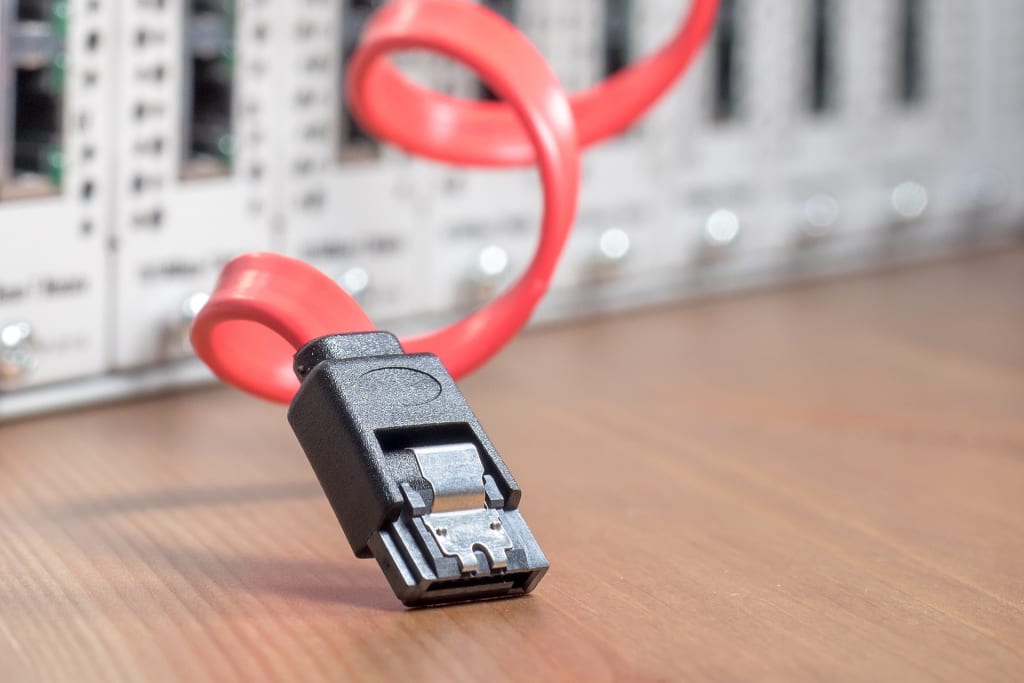
An IT network is a group of interconnected computing devices that can communicate with each other and share resources such as data, files, and hardware devices. It can be as small as two computers connected together, or as large as a global one that spans the entire world. These kinds of solutions are generally provided by the best infrastructure providers in Sri Lanka, together with other relevant solutions like network security and management.
These can be classified based on their geographical scope, such as local area networks (LANs), wide area networks (WANs), and metropolitan area networks (MANs). They can also be classified based on the protocols and technologies used, such as Ethernet, Wi-Fi, Bluetooth, and TCP/IP.
This allows users to communicate and share resources efficiently, which can increase productivity and collaboration. It also enables centralised management and control of resources, including security and backup procedures.
These types of infrastructure are essential for businesses for several reasons:
• Communication: They facilitate communication within an organisation. Employees can share information, collaborate on projects, and communicate with each other through email, instant messaging, video conferencing, and other communication tools.
• Resource sharing: These enable the sharing of resources such as printers, scanners, and other hardware devices, as well as software applications, databases, and other digital resources. This sharing of resources can help businesses to reduce costs and increase efficiency.
• Data management: They allow businesses to store and manage data centrally, which can help to improve security, backup and disaster recovery procedures, and ensure integrity.
• Scalability: They can be scaled up or down as needed, allowing businesses to adapt to changing requirements and growth opportunities.
• Mobility: They can also provide mobile access to resources, enabling employees to work remotely and access data and applications from anywhere, increasing flexibility and productivity.
They are critical for businesses as they provide the foundation for efficient and effective communication, collaboration, management, and resource sharing, which can ultimately lead to increased productivity, growth, and profitability.
What are the components of an IT network infrastructure?
Such infrastructure consists of several components that work together to provide connectivity, communication, and resource sharing, and are offered by reputed IT solutions providers in Sri Lanka. The key components include:
1. Devices
These are hardware components that connect, direct, and control traffic within it. The key devices used include:
• Routers: These devices are used to connect different segments and direct traffic between them. Routers use routing tables to determine the best path for data packets to travel through.
• Switches: These devices are used to connect multiple devices, such as computers, printers, and servers, and direct traffic between them. Switches use MAC addresses to forward data packets to the correct destination device.
• Hubs: These devices are similar to switches but are less intelligent and less efficient at directing traffic. Hubs simply broadcast data packets to all devices connected to them.
• Modems: These devices are used to connect a network to the internet or another WAN using a telephone line, cable, or satellite connection.
• Firewalls: These devices are used for protection from unauthorised access and malicious attacks by filtering incoming and outgoing traffic based on predefined security rules.
• Load balancers: These devices are used to distribute traffic across multiple servers or resources to optimise performance and ensure high availability.
• Access points: These devices provide wireless connectivity to devices such as laptops, smartphones, and tablets.
2. Protocols
These are a set of rules and standards that govern the communication between devices. They define how data is transmitted, received, and processed by devices, and ensure that devices can communicate with each other regardless of the manufacturer, operating system, or network topology. The key protocols used include:
• Transmission Control Protocol/Internet Protocol (TCP/IP): This is the most commonly used protocol and is used for communication on the internet and most LANs. It defines how data is transmitted, received, and routed between devices.
• User Datagram Protocol (UDP): This is used for communication on the internet and LANs. It is used for transmitting data that does not require reliable delivery or error checking, such as streaming media or real-time communication.
• Hypertext Transfer Protocol (HTTP): This is used for transmitting web content, such as web pages, images, and videos, over the internet.
• File Transfer Protocol (FTP): This is used for transmitting files, such as downloading or uploading files to a server.
• Simple Mail Transfer Protocol (SMTP): This is a protocol used for sending email messages.
• Post Office Protocol (POP): This is a protocol used for retrieving email messages from a server.
• Internet Message Access Protocol (IMAP): This is a protocol used for retrieving and managing email messages on a server.
3. Network services
These are software applications and services that run on a network. They provide various functions and capabilities to users and devices, such as communication, file sharing, and remote access. Some common services used include:
• Email: This is a service that enables users to send and receive email messages, typically using the SMTP and POP or IMAP protocols.
• File sharing: This enables users to access and share files and folders, typically using the Server Message Block (SMB) protocol.
• Printing: This enables users to print documents from their devices, typically using the Internet Printing Protocol (IPP).
• Remote access: This is a service that enables users to access and control devices from a remote location, typically using the Remote Desktop Protocol (RDP) or VPN.
• Web hosting: This enables users to host websites and web applications, typically using the HTTP protocol.
• Directory services: This service enables users to access and manage resources, such as user accounts, passwords, and permissions, typically using the Lightweight Directory Access Protocol (LDAP).
4. Security
This refers to the practices and technologies used to protect a network and its resources from unauthorised access, data theft, and malicious attacks. Its primary goal is to ensure the confidentiality, integrity, and availability of resources, data, and services. These measures may include:
• Firewall: This is a hardware or software-based security system that monitors and filters incoming and outgoing traffic based on predefined security rules.
• Intrusion Detection and Prevention Systems (IDS/IPS): These are security systems that detect and prevent unauthorised access, typically by monitoring network traffic and identifying suspicious activity.
• Virtual Private Network (VPN): This is a technology that allows users to securely connect to a network from a remote location by creating an encrypted tunnel between them.
• Authentication and Authorization: These are security measures used to verify the identity of users and grant them appropriate access to resources, such as user accounts, passwords, and permissions.
• Encryption: This is a technique used to scramble data so that it cannot be read by unauthorised users. Encryption can be used to secure data in transit, such as with SSL/TLS, or to secure data at rest on a storage device.
• Antivirus and antimalware software: These are software programs that detect and remove viruses, malware, and other malicious software from devices.
5. Cabling
These refer to the physical infrastructure used to connect devices and components. It provides the pathway for data transmission between devices, such as computers, servers, switches, and routers. Cabling typically consists of copper or fibre optic cables, connectors, and other hardware components, and is installed according to specific standards to ensure reliable performance and compatibility.
Some common types of network cabling used include:
• Ethernet: This is a standard cabling type used for connecting devices within a LAN. It typically uses twisted pair copper cables and RJ45 connectors.
• Fibre optic: This is a type of cabling that uses optical fibres to transmit data over long distances at high speeds. It is commonly used for backbone connections between switches and routers, or for connecting geographically dispersed networks.
• Coaxial: This is a type of cabling that uses a central conductor surrounded by a shield and insulation to transmit data. It is commonly used for cable television and some older Ethernet networks.
This is a critical component of this type of infrastructure, as it provides the physical means for data transmission between devices. It must be installed correctly and according to specific standards to ensure reliable performance, compatibility, and security. Properly installed cabling can help to reduce downtime, improve data transmission speeds, and ensure that devices can communicate effectively and efficiently.
6. Wireless access points
A wireless access point (WAP) is a device that allows wireless devices to connect to a wired network. It acts as a bridge between the two, allowing devices such as laptops, smartphones, and tablets to access resources and services without the need for a physical connection.
WAPs typically use the Wi-Fi standard to transmit and receive data wirelessly. They are usually connected to a wired network and broadcast a wireless signal that can be detected by nearby devices.
Some common features of wireless access points include:
• Multiple SSIDs: This allows the WAP to broadcast multiple wireless networks, each with its own name and security settings. This is useful for providing separate networks for different groups of users, such as employees and guests.
• Security: WAPs typically provide several security features, such as WPA2 encryption, to protect wireless traffic from unauthorised access and eavesdropping.
• Quality of Service (QoS): This allows the WAP to prioritise traffic based on the type of data being transmitted, such as voice or video, to ensure a consistent and reliable user experience.
• Coverage area: The coverage area of a WAP depends on several factors, such as the power of the signal, the number of antennas, and the physical environment. Multiple WAPs may be needed to cover a large area or a complex physical environment.
7. Management tools
These are software applications used to monitor and manage components, including devices, servers, applications, and services. These tools provide administrators with a centralised view of the network and its performance, allowing them to identify and resolve issues quickly and efficiently.
Some common tools used include:
• Monitoring tools: These tools are used to monitor the performance and availability of devices and services, such as switches, routers, servers, and applications. They provide real-time alerts and notifications when issues arise, allowing administrators to quickly identify and resolve problems.
• Configuration management tools: These are used to manage the configuration of devices, such as switches and routers, ensuring that they are configured correctly. They allow administrators to automate configuration tasks, enforce configuration policies, and roll back changes when necessary.
• Performance management tools: These tools are used to measure and analyse performance, providing insight into the utilisation of resources and the performance of devices and services. They help administrators to identify bottlenecks and other performance issues, allowing them to optimise performance and improve user experience.
• Security management tools: These tools are used to manage security, including firewalls, intrusion detection and prevention systems, and access controls. They provide visibility into activity and help administrators to identify and respond to security threats.






Comments (1)
Hello John! Thank you for a comprehensive breakdown of the various components that make up an IT network infrastructure. It's helpful in understanding the key elements required for establishing a reliable and efficient network. However, I would love to know more about the emerging trends and technologies shaping the future of IT network infrastructure. How do you see technologies like software-defined networking (SDN) or network virtualization impacting the landscape? Furthermore, I came across another valuable article on IT infrastructure by Cleveroad: https://www.cleveroad.com/services/it-infrastructure/. It discusses the importance of infrastructure monitoring and management for maintaining network performance and security.